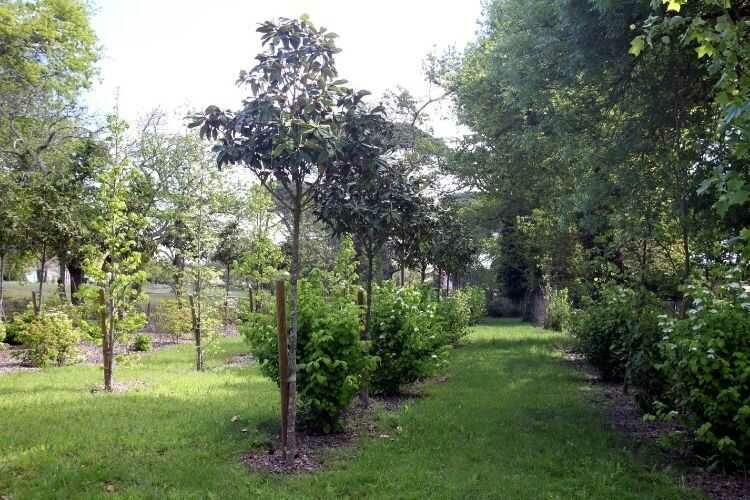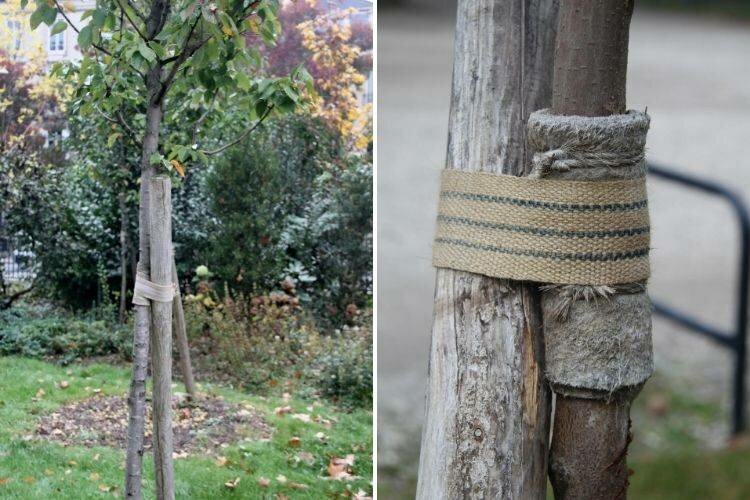
“Should we systematically stake the trees?” ” That’s a good question ! Since time immemorial, however, the answer has been very clear: We plant a tree. A tutor is affixed to him. Point. Yet according to the latest research, it seems that trees do not always need it. Worse ! Some even argue that trees without stakes recover even better than their crutches comrades.
There are many reasons, but the first fall on the gardener himself …

Be careful while staking your trees!
We do not tutorship just any old way, nor with just any material! Here are the main mistakes to avoid:
- we push the stake like a nag through the root ball or straight into the roots: when you decide to stake a young tree, avoid injuring the roots. Plan to place the stake well outside the root ball! The easiest way is to place it or them before planting the tree.
- ties are used which can injure the bark of the young tree: only use natural materials if possible or “soft” materials for the bark! There are systems designed for this, but rubber such as old tubes are a great solution. Categorically forget about wire or other rigid materials and don’t over tighten! The tree must be maintained but not strangled, so do not hesitate to move and loosen the links as it grows.
- we forget to remove the guardian: I personally removed the first year of installation, in my garden, dozens of old guardians from trees and shrubs forgotten there for decades (in addition, they were sort of old bars of rusty irons tied with plastic string …). Never forget to remove your tutor a maximum of one year after installation! If you wait until later, you risk injuring the roots of the tree.
Tutoring is not always welcome
Recent studies have shown that fixing a tree too firmly soon after planting it can sometimes be detrimental to it. Indeed, young trees need to move a little with the wind. This allows them to create a very powerful root system with roots that will anchor themselves deeper into the soil.
In addition, the tree will acquire a larger trunk that is more resistant to various external attacks. The latter will also produce more branches from an early age. Another proof that staking is not compulsory, on the contrary.
To forget about staking, you just need to plant well! That is to say, to properly seat the root ball or roots at the bottom of the hole that you have dug and to compact the soil well afterwards. If you have done this, your tree will not sway too much in the wind and even if it looks like a tad leaning the first year, it’s a safe bet that it will straighten up afterwards.

But a tutoring sometimes necessary
We will not lie to each other, tutoring may be necessary in specific circumstances:
- if the land has a slope worthy of the Beille plateau or the Aubisque pass: good staking will allow the tree to grow straight regardless of the slope.
- if your garden is so windswept that the gardener must also be staked
- if you plant a large subject with a reduced root system compared to its branches, this is particularly the case for trees presented with bare roots. In this situation, your tree, if it is not staked, will end up in the situation of a guy with a big head and small feet. It will collapse at the slightest breeze!
- if the “top” is already high on a very (too!) thin trunk: it is a bit of a case by case but sometimes, you will quickly realize that if you do not support your young tree, it will end up breaking in two at the first squall (which is sometimes good, if you want a clump). Always check when purchasing that your shaft is well balanced.
A little word : if you are patient, thrifty or both like me, you can also adopt very young trees. They are obviously less expensive to buy but this is not their only quality. Indeed, planting is a traumatic experience for a tree, especially if it has been torn from a gauge in the nursery. If the planting is carried out in his younger years, he will have a better chance of recovering from it. In addition, a young tree will not have the root bun problem that can be found in plants raised in containers. It will also be less sensitive to bad weather and will be better anchored in the ground. Finally, it is also easier to plant and transport a young one year old than a large five year old. Ultimately, we believe to save time by planting trees that are already imposing, but young trees planted at the same time will soon catch up with their big brothers in size and scope while being less capricious when it comes to recovery.

